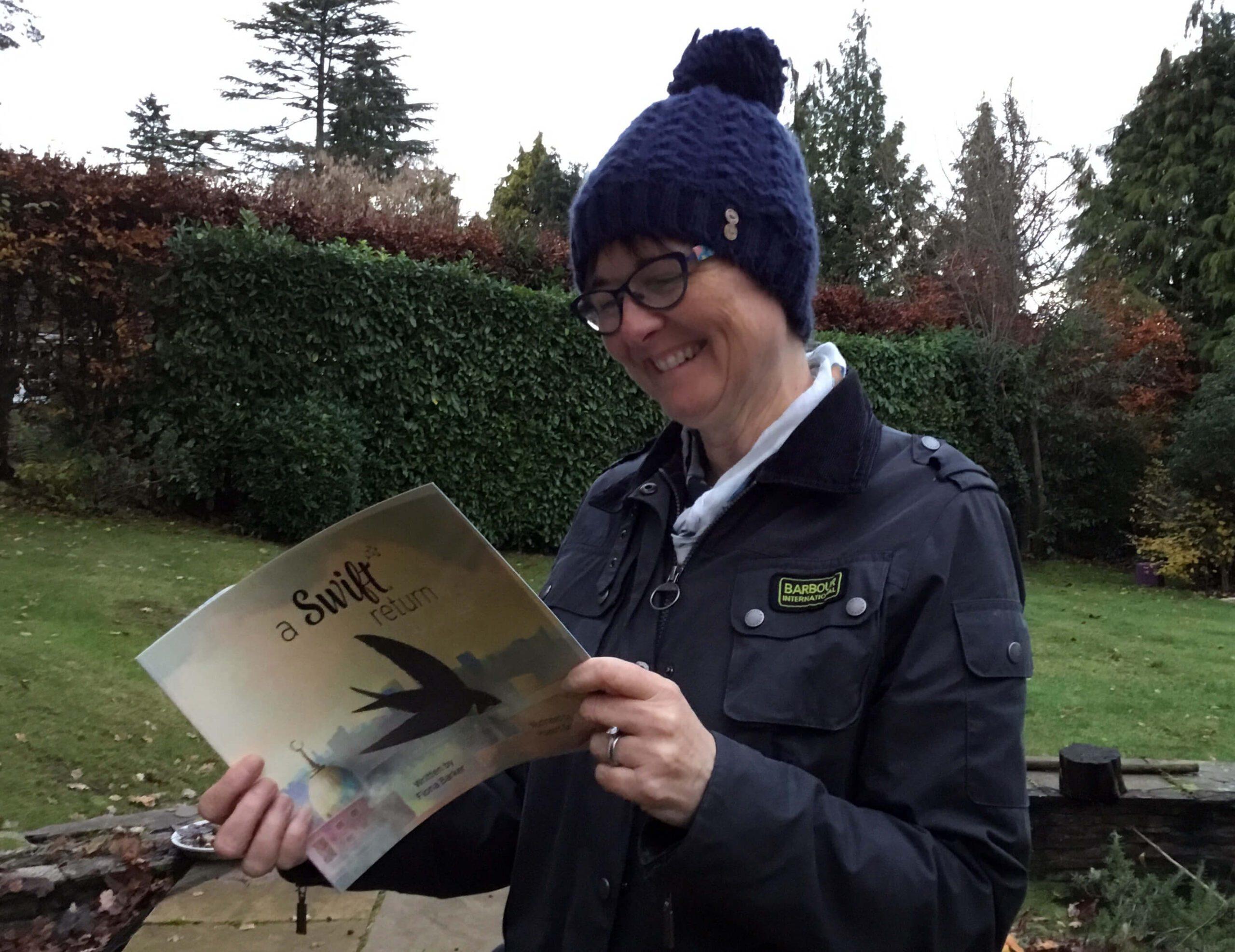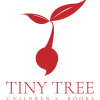
“…the swift was a natural choice.”
‘A Swift Return’ is an inspiring story about friendship, our environment, and how doing the little things makes the big things happen. The story follows two friends, Aria and Yusuf, who discover a fallen swift who, in nursing it back to health, form an everlasting bond. What’s more, they begin to use their skills to improve the world around them.
The book’s author, Fiona Barker is a passionate environmentalist and that shines through in ‘A Swift Return’. The new book also sees Fiona reuniting with longtime collaborator, illustrator, Howard Gray. Together, the pair created ‘Danny and the Dream Dog’ and fellow environmental picture book ‘Setsuko and the Song of the Sea’ — the best-selling Tiny Tree book of all time,
We chatted to Fiona about the release of her new book, exclusively for our blog.
Hi Fiona, how are you? How much are you looking forward to people reading ‘A Swift Return’?
I can’t wait for people to read about our swift and the lovely story of friendship between Aria and Yusuf. It’s so exciting (and a bit scary!) when readers actually get their hands on something you’ve been working on and thinking about for such a long time. But I just know that readers are going to love the characters and the setting which Howard has brought to life on the page so beautifully.
What was it like to be reunited with Howard on another project?
Working with Howard is always an absolute gift so it was a joy to be working together again. I think we just ‘get’ each other. He always brings an extra element of genius. This time I think it was how he has played with perspective. There are some stunning spreads in this book which I can’t wait for people to see.
You also worked with Howard on ‘Setsuko and the Song of the Sea’ and ‘Danny and the Dream Dog’. How has your relationship and working process evolved over the three books?
It feels like we’ve worked well together from the beginning, maybe because we met in person (at a Society of Children’s Book Writers and Illustrators Conference) before we started working together. I share ideas with Howard quite early on. I don’t know whether that helps or hinders things from his perspective but it’s helpful for me! It feels like it’s a very collaborative process. I’m happy for Howard to suggest changes to the text or pacing if he feels it would work better with the illustrations.
I must also give a mention to Maysoon Abublan who worked with us on the Arabic text. I really think this is a magical addition to this book, just like the Japanese text provided by Hideaki Matsuya was in Setsuko. Arabic is such a beautiful language and I think it embeds so well with the colours and dreamy aerial setting of the book. Through setting our stories in different parts of the world we want to show that looking after our planet is a shared goal. We all need to get involved.
There’s a big focus on collaboration in the book. It’s almost like the bond between you and Howard is reflected in the book through Aria and Yusuf. Which of the pair most reminds you of yourself, and why?
I’d never thought of it like that! But I can see what you mean. I think I am probably a bit more like Aria. My head is usually in the clouds and I obviously spend a lot of time thinking up stories like she does! But I don’t really like heights so I’d prefer to keep my feet on the ground like Yusuf!
“We’re all in this together but generally, humans are causing the problems and we need to be the ones who sort it out too.”
We’ve often talked about ‘A Swift Return’ being almost like a sequel to ‘Setsuko and the Song of the Sea’. Outside of you and Howard, what else do you think connects the two books?
I definitely think there’s a connection between ‘Setsuko’ and ‘Swift’. There’s the environmental link obviously but they also both feature humans and animals who come together and solve a problem that’s affecting us both. The friendship element and link between humans and animals is a very strong link I think. We’re all in this together but generally, humans are causing the problems and we need to be the ones who sort it out too. I also like the link of references to Japanese and Arabic. I think it’s really interesting for children (and adults) to see beautiful, different ways of writing text and conveying stories.
Although the two stories are set in very different environments, the sea and the sky, I hope there might be a wider link to include earth and fire one day.
‘A Swift Return’ is centred around two children (Aria and Yusuf) and a young fallen bird — a Swift. What themes were you looking to explore throughout the book?
I was definitely looking to explore the overriding theme of thinking about the skies above our heads and the air around us. But I wanted to do this gently, just like we did with Setsuko and her ocean environment. So I chose to explore it through these two friends who find friendship along the way too. I really think there is strength in numbers and by finding people who share our dreams and goals we can make a real difference.
‘A Swift Return’ is another environmentally-focused picture book from you. What are the key things you’d like people to take away from this story?
I would like readers to think about the air we breathe. It’s vital that we look after it. We live in this bubble that allows us to survive but because it’s invisible, we don’t think about it in the same way as we do about other kinds of pollution. Our life-support bubble is very, very thin. We must look after it. But I very much want readers to feel that they have the power to make a real difference with some very simple changes.
How do you approach balancing the more serious subject matter with the kind of storytelling that children enjoy?
I hope that the environmental message is hidden within the story of friendship that every child might recognise. Some readers will be dreamers like Aria and some very practical like Yusuf. They’re very different but they still come together with a common goal. I hope that’s a universal message of hope, especially in these incredibly troubled times.
A story like ‘A Swift Return’ is a perfect way to introduce discussions on air pollution in schools and at home. How do you think that teachers and parents could best use it?
I hope that teachers and parents could use ‘A Swift Return’ to open up discussions about the air around us and how we rely on it even though we can’t see it. There are interesting facts to be uncovered such as how thin the breathable atmosphere is; equivalent to the thickness of a piece of Sellotape on a small orange. It’s easy to look up and think the sky goes on forever but actually, it’s very thin. Debates about low-emission zones that have been introduced in many cities and that affect the daily lives of many children could be an interesting place to start. Or thinking about which journeys could be made on foot rather than by car. Or perhaps think about how we can improve air quality in other ways like gardening. If you grow something tasty you get extra benefits too!
Was there a particular moment, object, or piece of information that sparked the idea for ‘A Swift Return’? Is there a particular reason for focusing on the Swift as opposed to other birds?
Following on from Setsuko and her whale, I wanted to continue the theme of humans and nature being linked but this time in a story focused on the sky. Whales are totemic of the ocean so I tried to think of an air-dwelling creature that would be totemic of the sky. Swifts are masters of flight. They do everything on the wing; eating, sleeping. They’re so beautiful and a real symbol of hope when they return to our shores in the springtime. But their numbers are declining. Because of that combination of factors, the swift was a natural choice.
When researching for this book, were there any other writers or environmentalists that inspired you?
I’m constantly inspired by Chris Packham. He’s so brave in challenging the status quo and trying to bring about change. But I’m equally inspired by people making small changes in their everyday lives like the people from my local retirement village who come out litter-picking once a month to try and make our local environment better. In terms of writers, I’ve been very inspired by Yuval Zommer and his Big Books which celebrate the world around us. It was a huge thrill when he provided a cover quote for Swift.
Finally, you’ve written a lot of wonderful books lately (congratulations!). What was the most rewarding aspect of working on ‘A Swift Return’?
I think the most rewarding aspect has been working with Howard again and seeing him bring something to ‘Swift’ that is so different from ‘Setsuko’ yet so harmonious. That’s a difficult thing to pull off but I really think he’s done a brilliant job. It’s also been wonderful to work with the Tiny Tree team again. I know they want to see this book fly and it feels amazing to have that support behind us.

